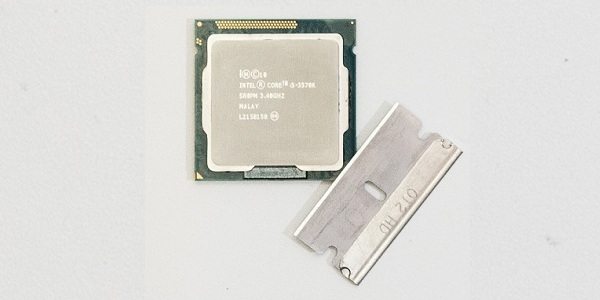Ivy Bridge and changing the Thermal Interface Material
Ryan Martin / 12 years ago

Ivy Bridge offers the best clock per clock performance of any consumer processor to date and exceeds Sandy Bridge by 5 to 15% in performance at equivalent speeds. Yet this revolutionary new architecture from Intel disappointed some enthusiasts, with its high temperatures and inability to clock as high as Sandy Bridge.
Ever since the first reviews came out speculation has been thrown back and forwards about whether removing the integrated heat sink (IHS) and changing the thermal interface material (TIM) on Ivy Bridge unlocked “K” processors would result in better temperatures and higher clock speeds. The logics behind this argument stem from the fact that Ivy Bridge is capable of higher clock speeds than Sandy Bridge once temperature can be tamed – as shown by an i7 3770K recently reaching 7.1GHz under LN2. Add to that the fact Ivy Bridge actually produces less heat, due to a lower TDP. Although the lower TDP doesn’t translate into lower temperatures because of the high density of transistors in the architecture that make heat dissipation more troublesome.
We want to offer something quite simple for the enthusiast world to see, a answer to the following question: What happens to temperatures when you change the thermal interface material on an Ivy Bridge processor? We won’t get into our testing methodology right away, because we will dedicate a whole page to that next.
One thing we want to introduce straight away is a warning-come-disclaimer about what we are going to attempt. By removing the integrated heat sink from an Ivy Bridge processor you void the warranty, even if you have purchased an Intel Performance Tuning Protection Plan. So we encourage you to know and understand the risks and consequences associated with what we are doing if you attempt to do it yourself. There is a high risk ( especially if you don’t know what you’re doing ) that you could brick your CPU during the process, since a razor is required to remove the IHS.
Right away we want to point out that this isn’t an Ivy Bridge review. Nor is this an Ivy Bridge vs Sandy Bridge overclocking guide or performance comparison. This is an Ivy Bridge modification results guide,designed to show you what temperatures improvements, if there are any, to expect after changing the TIM.
As this is written testing is yet to be started, so we are quite excited about the results to come. Our predictions are that by doing this we will hopefully be able to shave off 10 degrees celsius from overclocked load temperatures. As a result we expect most users would be able to push there Ivy Bridge CPUs that bit further, but obviously results will vary from system to system.
We would also like to say a massive thank you to Intel for making this testing possible.



















